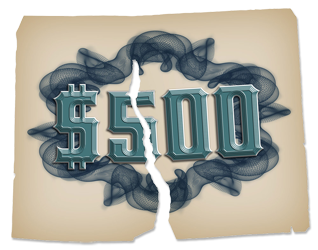| Index > money > CWDickinson |
Reconstructions (after C. W. Dickinson) Reconstructions of pages from a note book and album compiled by a security printer named Charles Wesley Dickinson in the late 19th century. The original specimens were photographed in the archives of the Numismatics Division of the Smithsonian and consist of samples and experiments of both Dickinson's and that of his father who was an inventor and operator of a geometric lathe. The geared mechanism of the lathe created the linear configurations for paper banknotes, popularly thought to be so complex as to be inimitable. Indeed, the engineers themselves had to record the machines settings so as to be able to repeat any design, but as it was proved by counterfeiters, inimitable is not the same thing as un-reproducable. The Dickinsons spent their lives working in the business of security printing, primarily in New Jersey but also in Canada and Washington D.C. The reconstructions of their printed specimens are not exact imitations, but rather broad interpretations, recreating the outlines and colours of the scrap-book pages and using software that produces similar effects to the original machines. My more detailed account of the Dickinson family and the agency of the geometric lathe appeared as a cover article for the American journal The Numismatist. The article is available here (1.5MB PDF). |
 |